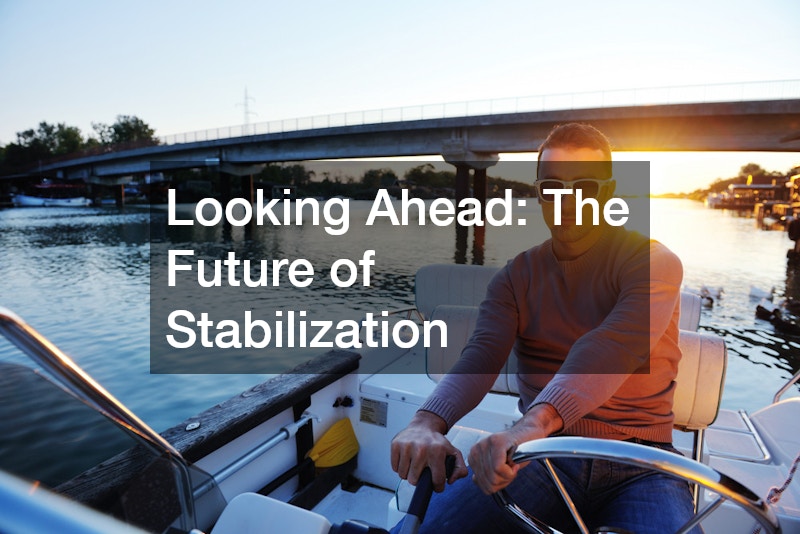For anyone who spends time on the water, stability is one of the most important factors in ensuring comfort, safety, and control. Whether you’re a recreational boater, a sailor, or someone managing a larger vessel, the ability to reduce rolling and pitching can transform your time on the water. Boat stabilization is not just about luxury—it’s a critical component of maritime safety and performance. From advanced technologies to traditional seamanship techniques, understanding stabilization methods helps keep vessels steady even in challenging conditions.
The Importance of Stability on the Water
When a vessel rocks excessively due to waves, wind, or shifting weight, it creates discomfort for passengers and increases the risk of accidents. Prolonged rolling can lead to seasickness, fatigue, and poor decision-making. More importantly, uncontrolled movement threatens structural integrity, cargo security, and even the safety of those on board. By prioritizing boat stabilization, operators enhance control and reduce risks, leading to more efficient navigation and a safer maritime experience.
Natural Factors That Affect Stability
Several forces influence a boat’s movement on the water. Waves and swell patterns are the most obvious contributors, but wind gusts, uneven weight distribution, and water currents also play key roles. Additionally, the shape and design of the hull directly affect how a boat responds to these forces. For example, deep-V hulls tend to cut through waves better, while flat-bottomed boats may experience more pronounced rolling. Recognizing these natural factors allows operators to prepare and implement the best stabilization strategies.
Traditional Seamanship for Stability
Before the advent of modern technology, mariners relied heavily on seamanship skills to keep vessels stable. These practices remain relevant today and serve as the foundation of effective boating:
-
Weight Distribution: Evenly placing gear, passengers, and cargo prevents one side from being overloaded, reducing the chance of tipping or rolling.
-
Trim Adjustment: Adjusting trim tabs or shifting weight fore and aft balances the vessel and improves handling in rough water.
-
Speed Control: Slowing down in choppy conditions minimizes the severity of rolling and pitching, giving the boat a steadier ride.
-
Course Alteration: Changing direction relative to waves—either taking them head-on or at an angle—can significantly reduce side-to-side rolling.
These seamanship techniques require attentiveness and experience, but they are effective first steps in improving boat stabilization.
Modern Stabilization Systems
Advancements in technology have revolutionized how vessels achieve stability. Modern stabilization systems use sophisticated engineering to counteract motion actively or passively.
-
Fins: Hydrodynamic fins extend from the hull and use sensors to detect rolling motion. They adjust their angle automatically, generating lift that counters wave-induced movement.
-
Gyroscopic Stabilizers: These devices house spinning flywheels that create torque to resist unwanted motion. Gyroscopic systems are particularly popular on luxury yachts for their effectiveness at rest as well as under way.
-
Interceptors and Trim Tabs: By adjusting water flow along the hull, these systems help balance vessels dynamically, providing smoother rides in varying conditions.
-
Ballast Systems: Some boats use tanks that can be filled with water to increase stability, lowering the center of gravity and reducing the risk of excessive rocking.
Each of these systems provides a different level of control, and many boaters combine them with traditional methods to maximize performance.
The Role of Design in Stabilization
A boat’s design plays a crucial role in determining its inherent stability. Wider beams generally provide more stability, while hull shapes influence how water is displaced. Catamarans and trimarans, for example, benefit from their multiple hulls, offering superior stability compared to monohulls. Designers also incorporate chines, keels, and other structural features that help reduce rolling. For operators selecting or customizing a vessel, understanding these design elements is key to choosing the right level of stability for the intended environment.
Safety and Comfort Benefits
The most immediate benefit of effective stabilization is passenger comfort. Minimizing motion reduces seasickness, making time on the water far more enjoyable. However, the safety implications are just as important. Stable vessels are less prone to accidents caused by falls, shifting cargo, or loss of control. For those working at sea—whether in fishing, transport, or maritime services—boat stabilization directly improves efficiency and reduces fatigue.
Applications Across Different Vessels
While stabilization is essential for large ships, smaller recreational boats also benefit significantly. On sportfishing boats, for example, stabilizers allow anglers to remain steady when casting or reeling in catches. For sailing yachts, reducing heel and roll improves navigation precision and passenger comfort. Commercial vessels transporting goods rely on stabilization to secure cargo and maintain schedules. No matter the size or purpose of the boat, stabilization systems and techniques enhance performance across the board.
Looking Ahead: The Future of Stabilization
Innovation continues to push the boundaries of what’s possible in maritime stability. Advances in automated sensors, real-time data processing, and lightweight materials are making systems more efficient and accessible. Sustainable energy sources, such as solar and hybrid power, are being integrated into stabilization technologies, offering eco-friendly solutions for the next generation of vessels. As the boating community embraces these advancements, smoother, safer journeys will become the standard rather than the exception.
Boat stabilization is far more than a matter of comfort—it’s a crucial aspect of maritime safety, efficiency, and enjoyment. By combining traditional seamanship skills with modern technological systems, boaters can significantly reduce rolling and pitching in all conditions. From the smallest recreational boats to the largest commercial vessels, stability ensures smoother journeys and safer experiences. As technology continues to evolve, the future of boating promises even greater control over the forces of nature, allowing more people to enjoy the water with confidence.

